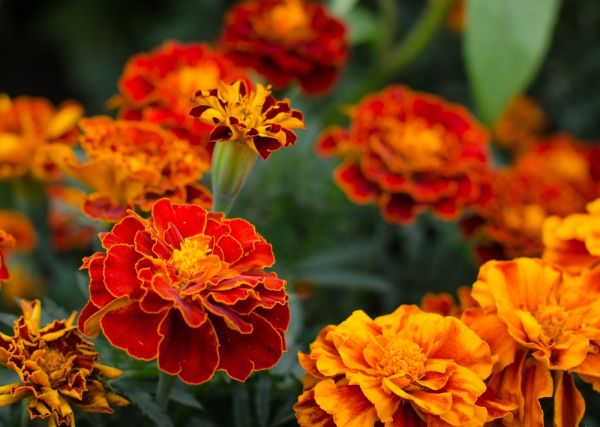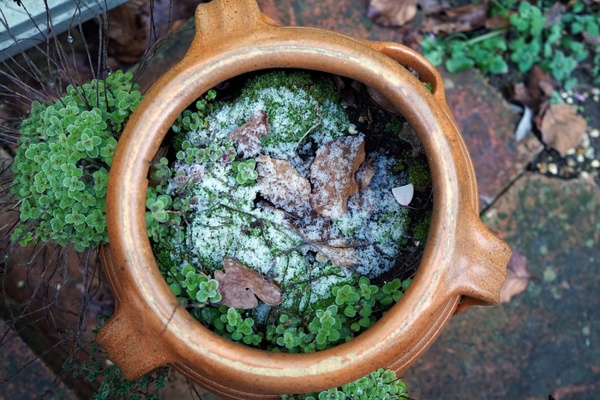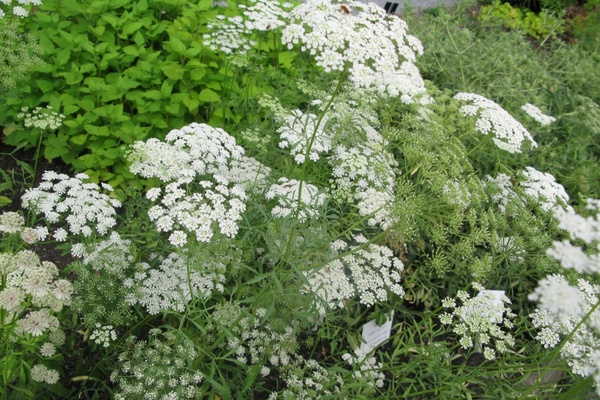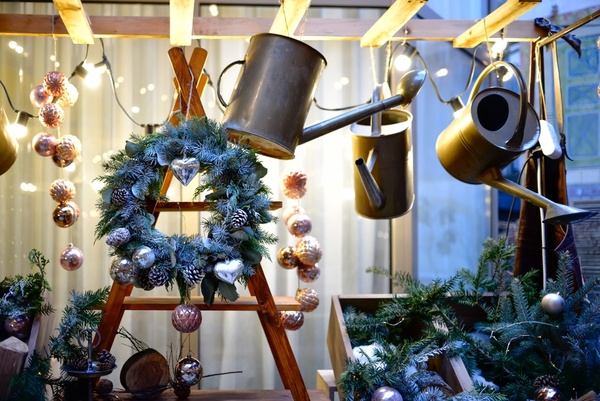
Marigold means ‘golden flower’ and these delightful annuals will gleam and dazzle in pots and borders all summer. Easy to grow and care for, marigolds attract beneficial insects, and they’re also great at pest control.
Which marigold is which?
The most complicated thing about marigolds is their name. Several different plants are called marigolds, so here are the three most common types and how to identify them.
- Calendula officinalis, also called the pot marigold, calendula marigold, Scotch marigold or English marigold. Pot marigolds have daisy-like flowers with long, narrow, oval petals. They typically grow to between 30-60cm (1-2ft) tall.
- Tagetes patula, called the French marigold, although it’s native to Mexico. French marigolds have broad, squarish petals with curled or frilled edges, and grow to around 20-30cm (8-12in) tall.
- Tagetes erecta, the African, Mexican or Aztec marigold (also native to South America) has round pompom flowers and can reach up to 1.2m (4ft).
How to grow Calendula (pot marigolds)
Calendula seeds can be sown directly outdoors from March onwards, once the soil temperature reaches 18°C (65°F). You can start them off earlier indoors in February, in seed trays filled with moist seed compost. Place the tray on a sunny windowsill or in a greenhouse and cover with a clear polythene bag until the seeds germinate. Prick out when big enough to handle and grow on ready for planting out in April. Outdoors, sow the seeds 0.5cm deep, where they are to flower, and thin out to about 25cm (10in) apart.
Pot marigolds like a sunny position in the garden and well-drained soil. Planted around vegetable gardens, they will attract whitefly and aphids that would otherwise attack the vegetables. This brings in lacewings and ladybirds, which make short work of the pests. The flowers are also popular with bees – remember to choose varieties with open centres, so that bees can find the nectar easily.
How to grow French and African marigolds
French and African marigolds are best started indoors in early spring, sown in moist seed compost, with a light covering of compost over the seeds. Cover the seed tray with a clear polythene bag and keep at a temperature of between 21-24°C (70-75°F) until the seeds have germinated (usually 5-10 days).
Once the seeds are large enough to handle, transplant them into individual small pots and grow on in colder conditions. Once the frosts are past, they can be hardened off and planted out.
French marigolds make an excellent nectar source for both butterflies and bees because they flower for such a long time. African marigolds attract hoverflies, whose larvae love eating aphids. The scent of French marigolds repels whitefly, and there’s evidence that both French and African marigolds deter some harmful soil nematodes, so plant them among your vegetables to keep pests at bay. Just be warned that slugs and snails love all kinds of marigolds!



